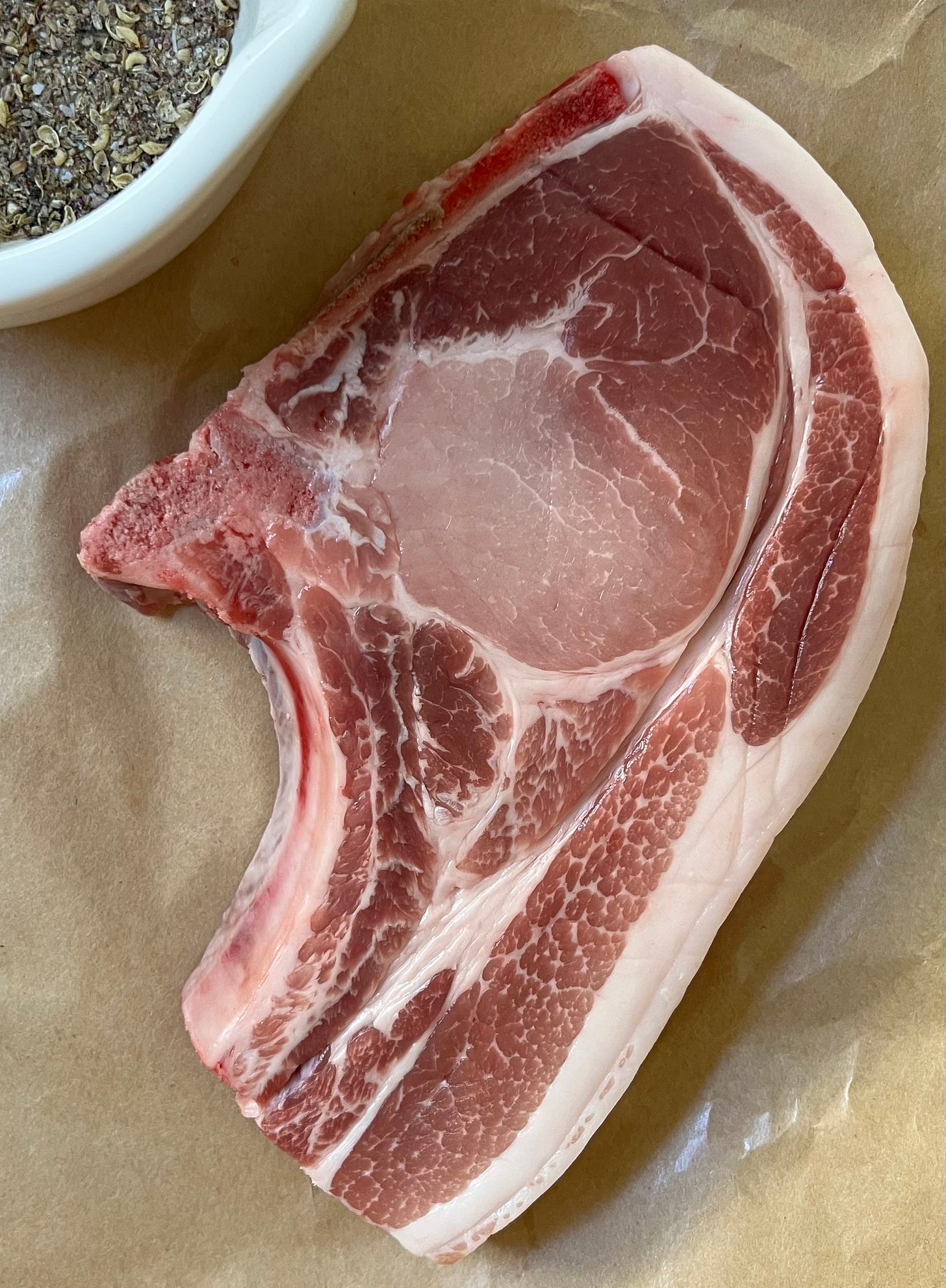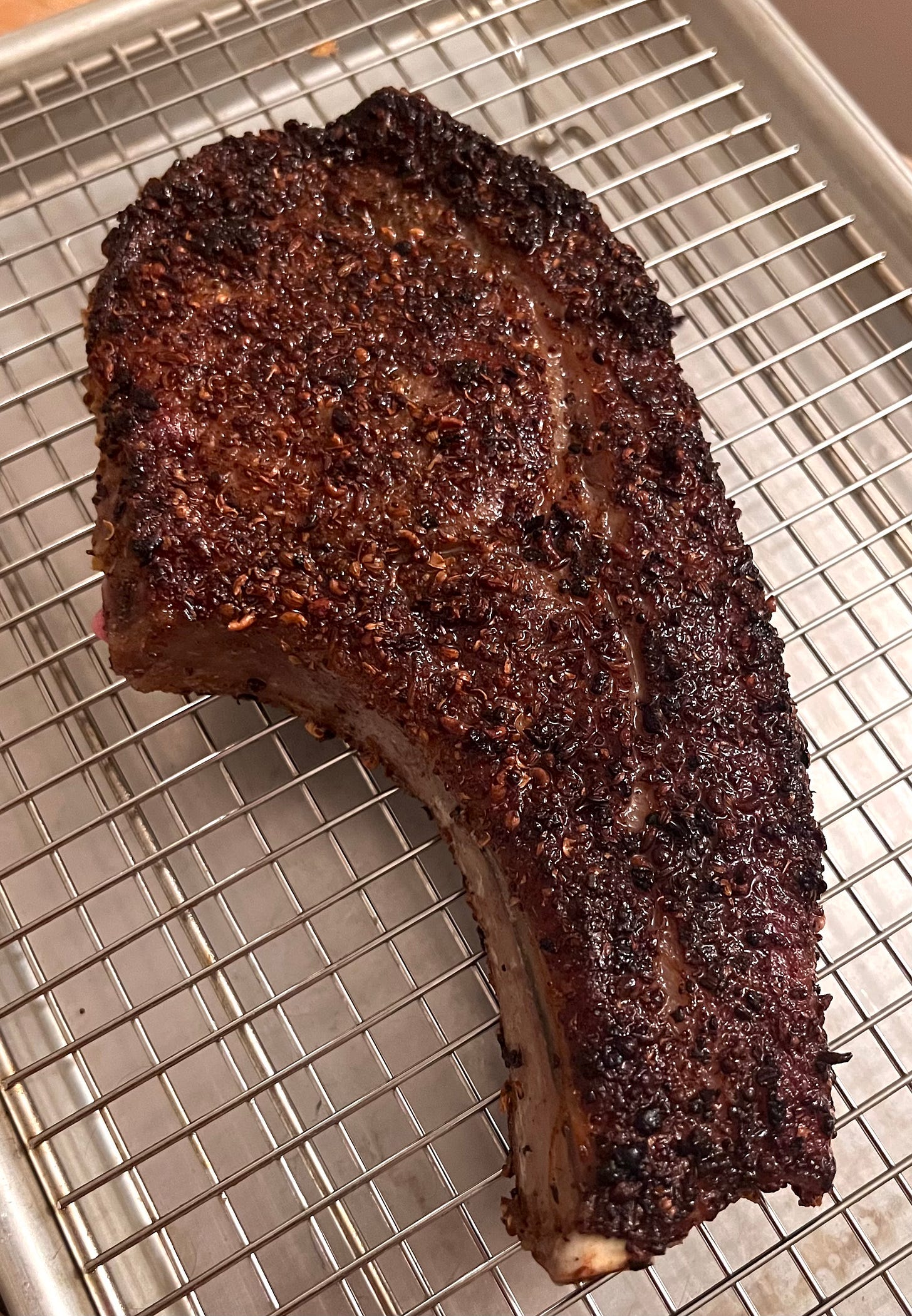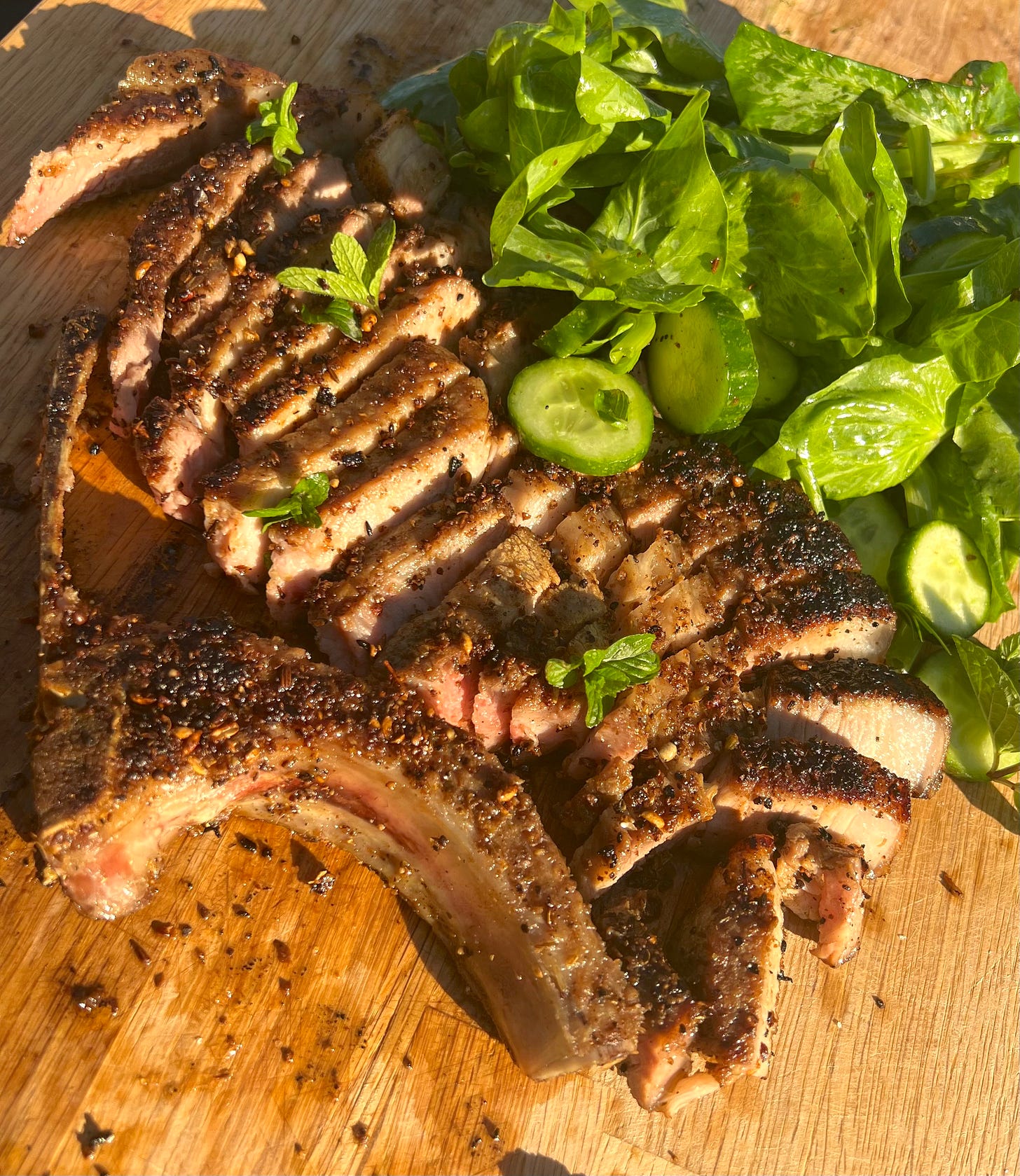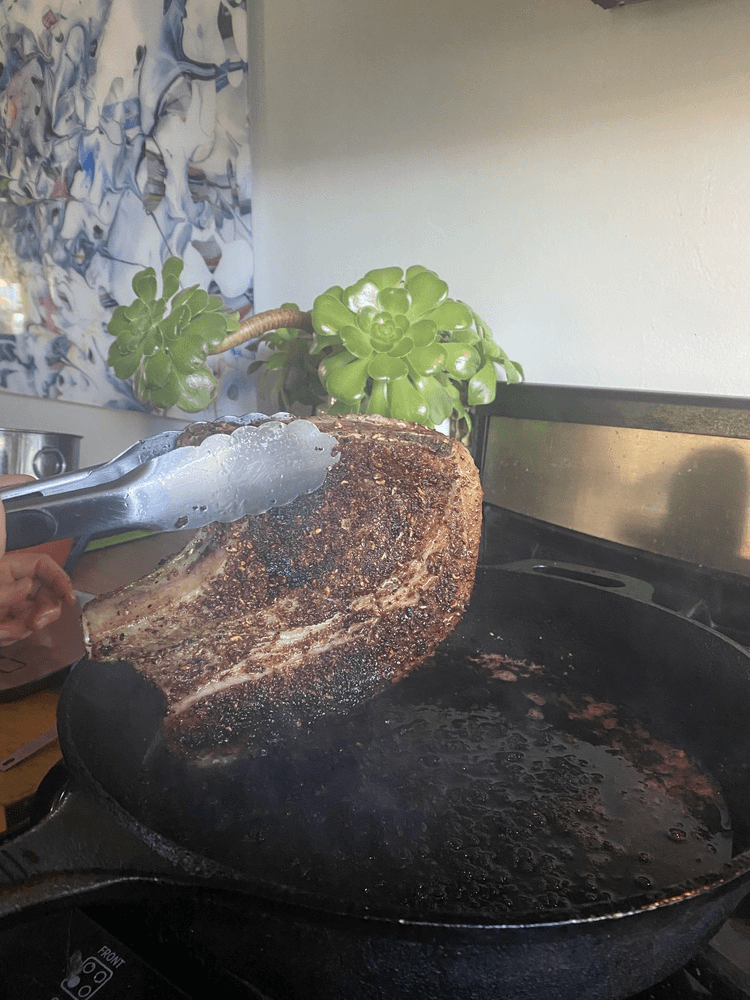I Don’t Really Like Pork Chops
And a recipe for a pork chop so scrumptious I’m reconsidering my position
I’m not exactly sure what a pork chop ever did to me, but I’ve never liked the cut. Chops of the pork variety often yield overly lean, meh-filled mouthfuls of meat that yearn for more flavor and complexity. I’d rather be eating bacon.
But once upon a time, that all changed, with one momentous chop.
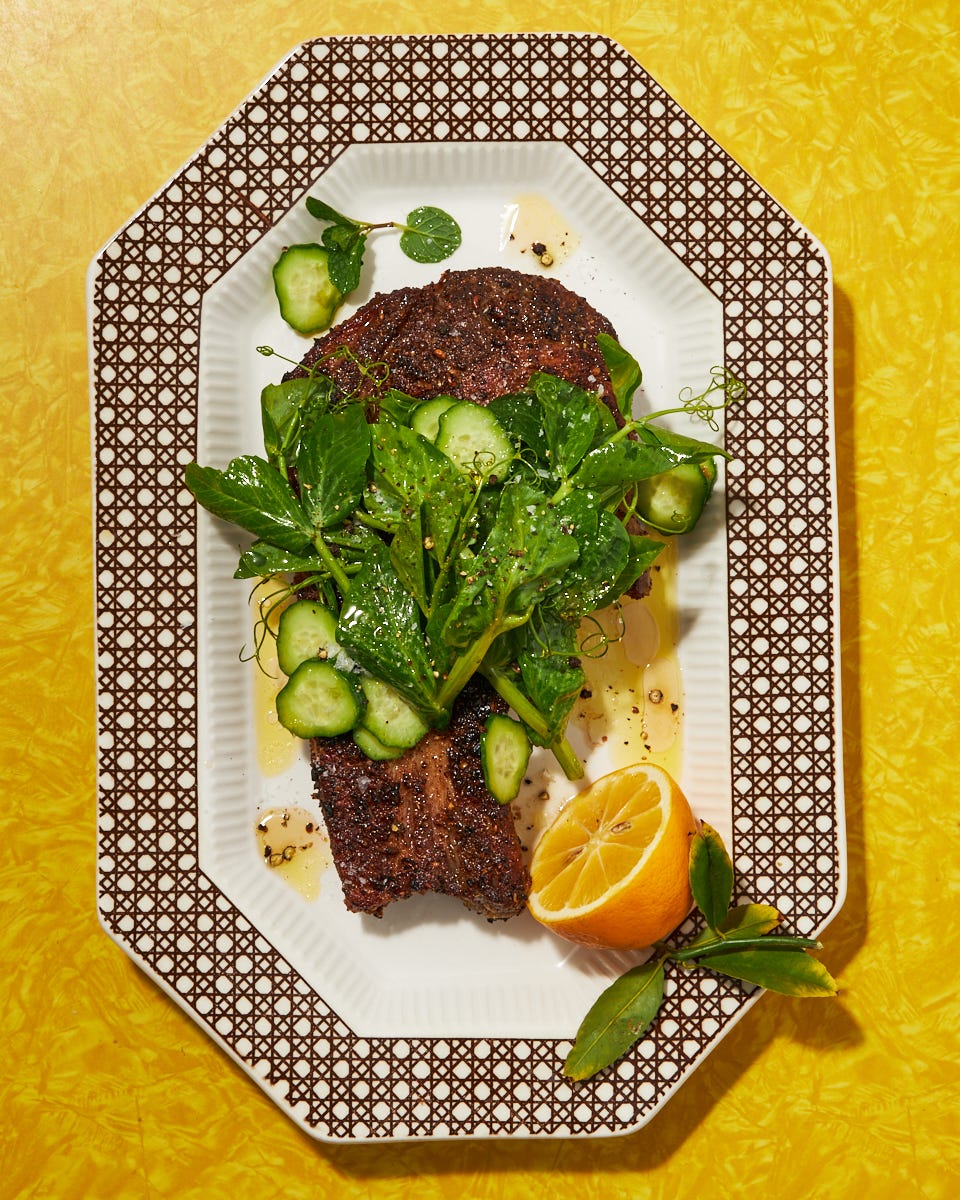
The ways of taste memory are befuddling: I can't for the life of me remember where I ate The Chop That Changed It All. I’ve been doing that squinting thing with my eyes and face, trying to cull the memory from oblivion, but apparently my hippocampus is malfunctioning, which is annoying, because this was a legitimately memorable (albeit, “memorable”) moment in my life.
I remember wines of all colors. I chewed on a bone. A hefty bill awaited at the end of it all. My retronasal sensations were as activated as a NASA switchboard operator’s fingers on launch day. That was back in 2005, when I thought I knew a lot about food and hadn’t yet come to the terrifying realization that the more you know, the more you realize how much you don’t know.
SPIEL vs. SPIEL
I recall a persuasive waiter whose “this pork chop really will change your mind about pork chops” spiel was met with my “I really don’t like pork chops and I don’t want to change my mind” spiel. Ultimately and thankfully, the spiel scale tipped his way.
GRATITUDE
The chop was brined and smoked. Given these two elemental cooking methods, my proclivity for a pork chop pivoted instantaneously. Brine + smoke yielded a juicy, tender, sweet, woodsy, and steak-like chop, the likes of which this know-it-all had never experienced.
I’ve learned that when it comes to pork chops, the brine is the ice cream, and the smoking is the cherry. Analogy translation: brining is obligatory and smoking is a bonus. In this recipe, I’ve developed a dry brine—which is essentially just a simple spice rub.
DRY BRINES ARE EASY!! JUST RUB IT, AND REST IT!
Active time on this recipe: 12 minutes
When brined, meat absorbs the brine’s salt, which has the ability to morph and break down muscle fibers. These “dissolved” meat proteins then form a gel that can capture moisture, making meat tissue less able to contract (read: dry out) and more able to hold onto flavor— both from the meat itself and from whatever flavoring agents are in the brine. This tenderizing is especially great for lean proteins like pork chops, since its central piece of flesh is the lean loin, which I find pretty boring: a perfect candidate for more flavor and juiciness.
THE CHOP-SPEL
The equally vital piece of my Chop Gospel has to do with the quality of the meat.
On a recent Sunday stroll through the farmers market, I was struck— uncharacteristically— by a gorgeous pork chop, complete with the sirloin cap atop the loin and a more-than-generous strip of belly (that’s bacon, pre-bacon). With dark pink hues of such variation, the presence of so-called “light” meat was minimal. The cut was complex:
The chop sat for a couple of days with no epicurean lightbulb moment in sight. All I knew was that a brine was in its future. But then, perhaps knowing that it had failed to coax the complete details of my groundbreaking pork chop story from its depths, my memory decided to throw me a bone.
Enter Chef Karen Akunowicz, of James Beard, Top Chef, and Boston’s Fox & the Knife fame, with whom I had the humbling pleasure of working years ago. All of a sudden, my memory recalled that Karen— genius chef that she is— seasons her rabbit not with salt and black pepper, but instead with her self-titled “magic dust” mixture of salt, red pepper flakes, and ground Sichuan peppercorns. Her employment of Sichuan peppercorns in place of ubiquitous black ones has always stuck with me. And it was this method that I wanted to embue into– and onto– my chop.
SICHUAN IS THE RIGHT ONE
Why Sichuan peppercorns are so underutilized and under-appreciated in Western cuisine is beyond my comprehension. Perhaps they’re considered polarizing for their mouth-numbing effect. But black peppercorns numb the palate in their own way, too, so what gives with the discrimination?! Cooks tend to pigeonhole them into… surprise!... Sichuan applications. No more of this typecasting! Coupled with the other elements in this brine blend, I invite you to revel in the versatility and complexity of the Sichuan p-corn.
And so, with Karen’s peppercorn play as my ignition button, I developed a bangin’ blend of aromatics, salt, and sugar. Many tests took place to land the proper proportion for this must-make chop, capable of converting pork chop deniers into proselytizers, and pork chop lovers into addicts.
Thanks to a good long sojourn, these spices encrust, engulf, and um…. enpermiate the meat, yielding a chop that needs no kiss of smoke in conjunction with the brine. The result is versatile enough to sit nestled into polenta, shingled into tacos, or sliced atop a mountain of crispy rice and greens. I love a pile of brightly-dressed pea shoots for cutting spice and fat. On more than one occasion, I’ve served slices in lettuce and cabbage cups, with banchan-esque fillings and sauces. In short, this is a true, so-good-you-can-do-with-it-what-you-will pork chop.
ORDER UP
Get the best chop you can afford with a great fat cap, ideally from an actual butcher shop with well-sourced product. If possible, ask your butcher to cut you a chop taken from the shoulder end rather than the loin end. Shoulder chops will give you more intramuscular fat (which equals juiciness and flavor) and less of the actual eye of the loin, which I could do without, forever.
RECIPE TIME IS THE BEST TIME
The recipe includes detailed instruction on searing technique, cook time, and the most important thing you can do when cooking a great chop.
I think this is why people like pork chops?
MAGIC DUST PORK CHOPS
Serves 2
Keep reading with a 7-day free trial
Subscribe to NOODLE: A Recipe Newsletter to keep reading this post and get 7 days of free access to the full post archives.





